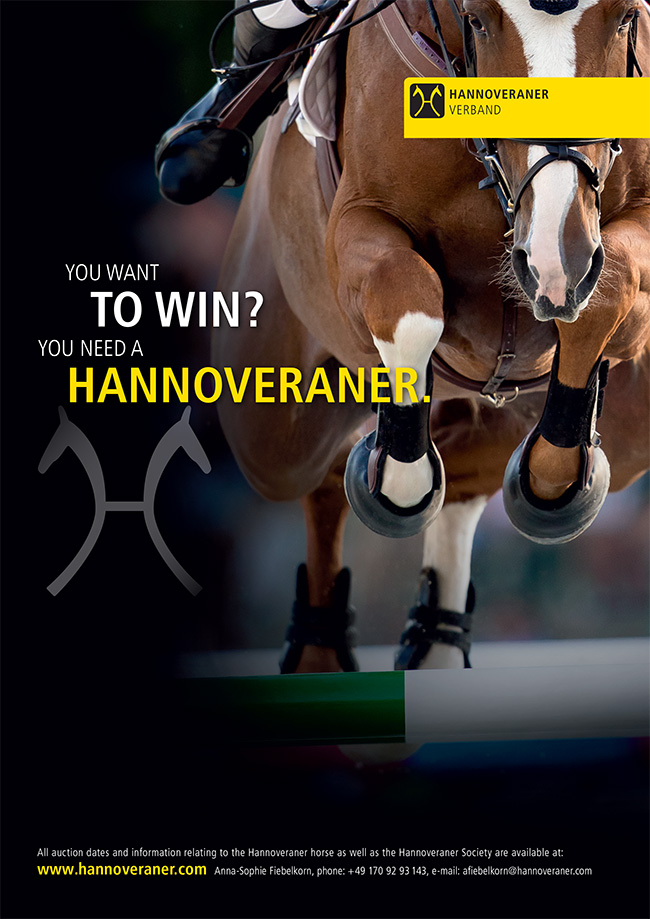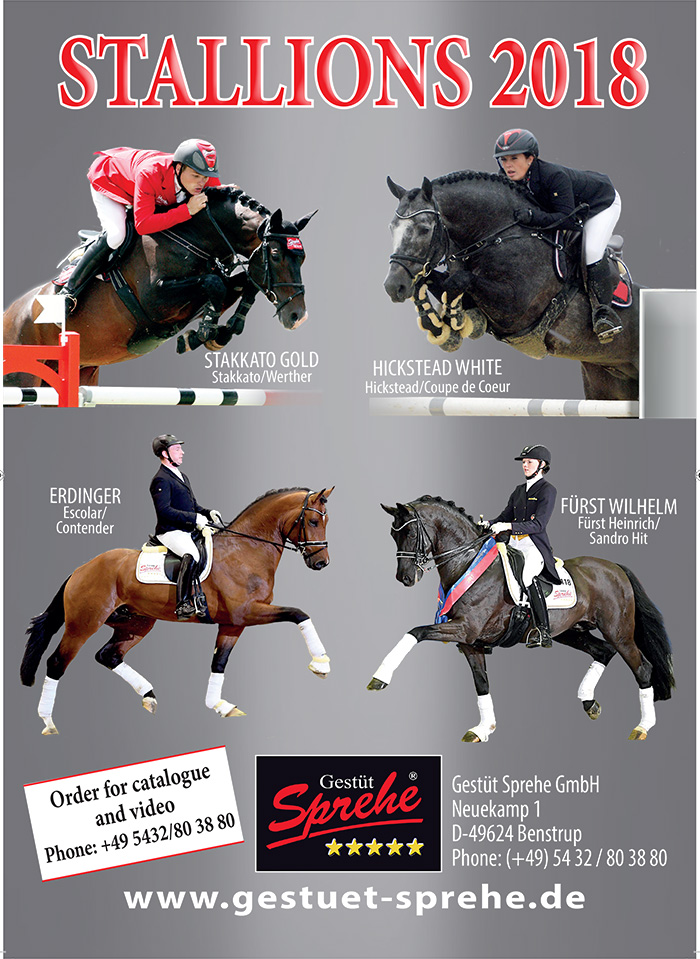
Analysis: Gemma Alexander, Christopher Hector and Thomas Hartwig
It is incredible how quickly history can disappear. Young jumping horse classes are a good example. You have the feeling that they are a relatively recent development – but just when, and how recent?
The Société Hippique Française at least has a very brief history on their website, with a time line:
1972: The SHF is approved by the Ministry of Agriculture to be in charge of the young horse trials in France.
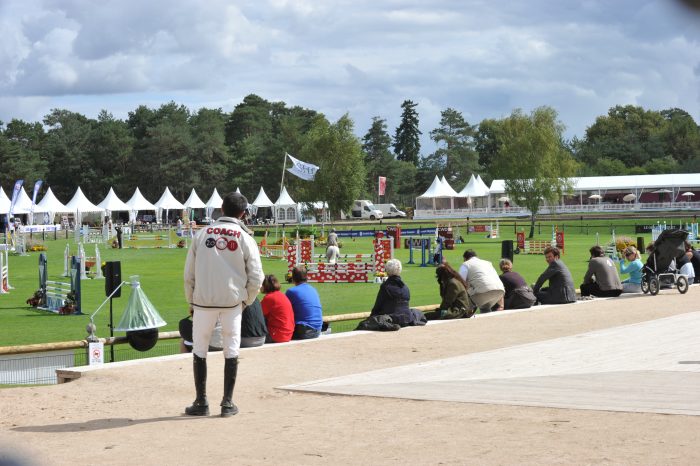
1973: creation of two show jumping classes: the classical cycle and the free cycle.
1982: First Grande Semaine de l’Elevage at Fontainebleau bringing together the finals of the young horses of 4, 5 and 6 years old.
1988: integration in the classification of model notes, paces judged on an individual recovery, way and style to the obstacle.
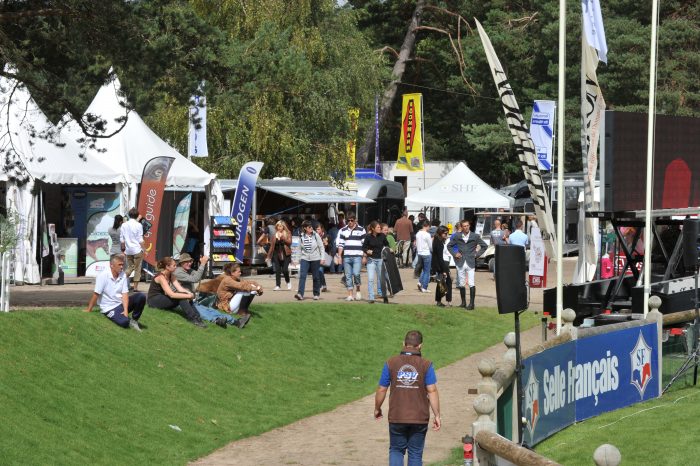
Even information on the World Young Jumping horse championships in Lanaken is difficult to find. Max Ammann’s compilation, The FEI Championships, doesn’t mention them.
It seems they were first held in 1992, as a private show run by the redoubtable Leon Melchior, but blessed as World Championships in 1994. Still reportage, much less discussion of the format, is difficult to find. There is an article on the 1999 World Championships in l’Année Hippique in which the knowledgeable German journalist, Jörg Savelsberg raised the question of style vs faults and time. The seven-year-old championship was won that year by Caretano Z (Caretino – Reichsgraf) ridden by Jos Lansink in classic style, but other riders and horses had Jörg pondering:
“The seven-year-olds’ rounds certainly got people thinking a little and showed how close the Lanaken competitions come to the ‘real thing’. Jumping competitions judged on faults and time leave no room for style, and demand a results-oriented approach from the rider. A rider like Jos Lansink may be able to ride courses under these conditions with an eye to aesthetic appearance, but others find this impossible.”
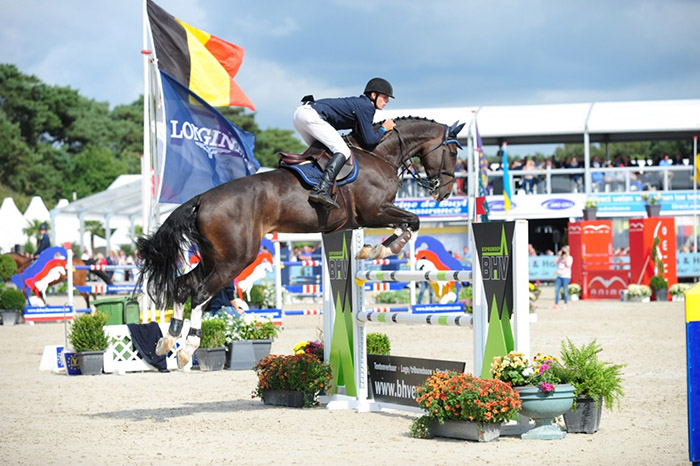
“But what is the best method for testing and evaluating young jumping horses in a World Breeding Championships? There is no denying that it is faults and time on which these young horses will be judged when they enter the adult world. If we want to bring breeding characteristics into the equation, however, we should perhaps also try to introduce an element of judging according to criteria such as style. The World Championships for Young Jumping Horses would take on a different character, but they would also be subject to the judgements (and also, let it be said, misjudgements) of a jury – and nobody in Lanaken wanted to go down this path.” (L’Annee Hipppique, 1999/2000)
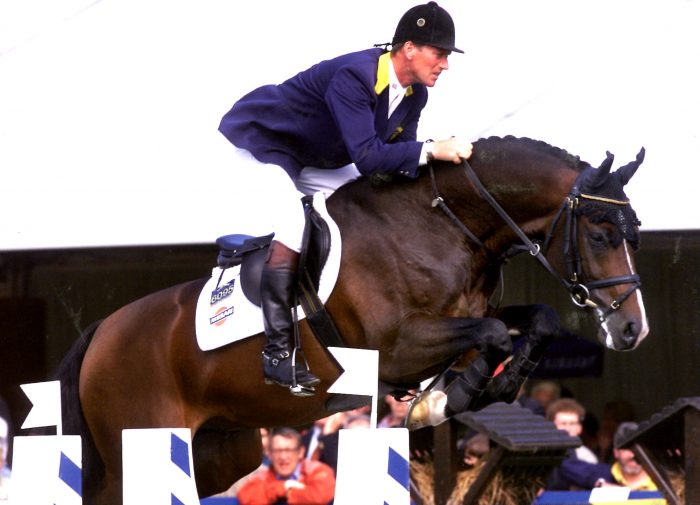
Caretano Z – competed at the World Cup final in 2001 with Jos Lansink
before a fatal groin injury ended his career.
The Belgians have taken young horse classes seriously, and have used the World Championships in Lanaken as a way to highlight the quality of their jumpers.
Selection for the World Championships is made at Gesves, at the Belgian national championships. Horses can qualify for Gesves by competing in the classique cycle, a series of young horse competitions held for 4, 5 and 6-year-old horses. In these classes, the four-year-olds are judged only on clear rounds, although at the final qualification at Gesves, they will be judged against the clock. The others are all judged on the basis of faults and time.
About half the entries for Lanaken come through this pathway. There is also the opportunity to qualify at a selection day in Gesves, a week before the World Champs by showing a clear round and being part of the 50% with the best time. However on this selection day, the obstacles are at least 10 cm higher than normal, and the time is tough to get. There are also wild cards to compete at Gesves, as indeed there always are to compete at Lanaken. The seven-year-olds can all compete at Gesves because they have no classique cycle in which to qualify. Still my informant was suitably vague when I asked when the classes had begun…
Even the German FN, usually awash with information was less than its usual helpful self. The reply was very brief:
For the first time the competition class A and L for young show jumpers is mentioned in the LPO 1976 – (explanation follows).
Since 1965, however, there have been competitions/tests for the special ability of young showjumpers, also with class A and L requirements.
So I turned to my most reliable source of information, Thomas Hartwig, and a day later this landed in my in-box:
A short history of the German show jumping competitions for young horses:
From a stepchild to secret of success by Thomas Hartwig
The history of the Springpferdeprüfungen, a typical German competition for young show jumping horses, is a good example of one of the causes of the success of German show jumping horses and German show jumper riders in the last 40 years. And it is also a good example that the right medicine must be given in the right dose and to the right patient. Because every medicine given in the wrong dose, and for the wrong patient, is a poison.
Until the seventies of the last century, German jumping horse breeding was not significantly better than in Ireland, Great Britain or France. The American Thoroughbreds also achieved remarkable success in international show jumping. In German jumping stables of the times, there was a good tradition that you always had a few Irish horses in the stable. Not surprisingly, a few German horses changed their nationality almost overnight and the next morning awakened as Irish or French, because horses of these nationalities would sell better.
The decisive turnaround which meant that horses of German breeding after the 80s dominated show jumping was in large part due to introduction of a special kind of competition for young horses -‘Springpferdeprüfungen’ – in the mid-70s.
In the middle of the 70s, a group of experts around the former national show jumping coach Hermann Schridde, one of the greatest German horsemen after the Second World War, created a new competition strictly for young show jumping horses. The aim of the competition was not only to find a winner, and some horses for the placings, an important aim was to give the young horses the opportunity to learn, in age-appropriate tests, as much as possible about show jumping, and to connect show jumping with positive aspects and impressions for the horses. For this it was no normal running against the clock in the competition – only if they were too slow, over the allowed time, did they get penalties. The horses received marks from 0 (worst) to 10 (best) for their style of jumping, galloping and handling. Technique of the front legs and the bascule were of great influence on the mark. A refusal, or a another mistake like a jumping fall, is punished by a reduction of 0.5 of the mark.
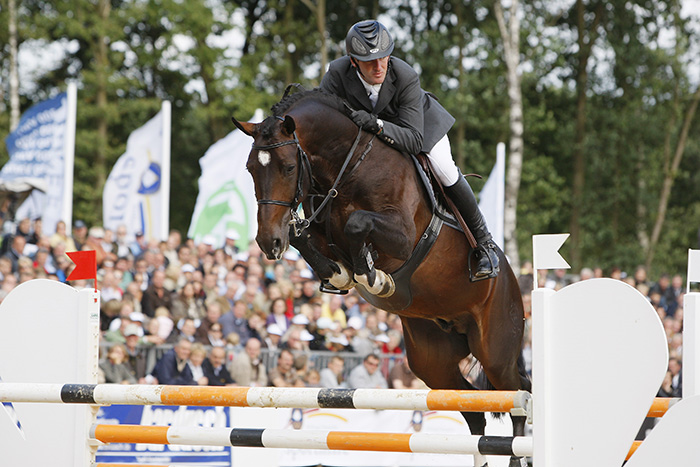
Conte Belllini (Cornet Obolensky / Ramiro)at the Bundeschampionate
– he went on to win €85,046
The introduction of these jumping horse tests at that time was still a relatively new examination format and not without controversy. Critics believed the horses were being educated to “die in beauty,” meaning that they would not learn early enough to complete a course fast and in a good time. In the early 80s most of the 3,000 tournament organizers initially rejected the format. Only when the class requirements were changed (Leistungs-Prüfungs-Ordnung, LPO) were the organizers forced to offer the new Springpferdeprüfungen. The introduction of the binding requirement that a Springpferdeprüfung had to be offered at a certain number of jumping competitions meant the number significantly increased. In 1982, the first year of this determination, however, only about one jumper horse test per tournament was staged. Today no one has to convince the organizers of the meaningfulness and attractiveness of this format anymore. In 2017, almost 8,400 young jumping horse tests were recorded with around 179,000 starts. This means that about one fourth of all starts in the show jumping discipline were in show jumping competitions for young horses in the German Tournament Sport.
Germany’s most successful coach Herbert Meyer was the national coach of the German show jumpers from 1985 to 2000 and during this time led the team to five Olympic gold medals, three World and three European champion titles. Meyer was also one of the initiators of the young horse classes. He remembers: “The beginning of the show jumping competitions was not easy, especially when dressage judges had to judge. There were some funny results around. After a few years it was a solid thing. In retrospect, I can say that the introduction of the jumper tests and the inclusion of this format in the Bundeschampionate has brought forward jumping horse breeding, but also show jumping in Germany tremendously. Maybe it was the best thing that has happened to German jumping in recent decades.”
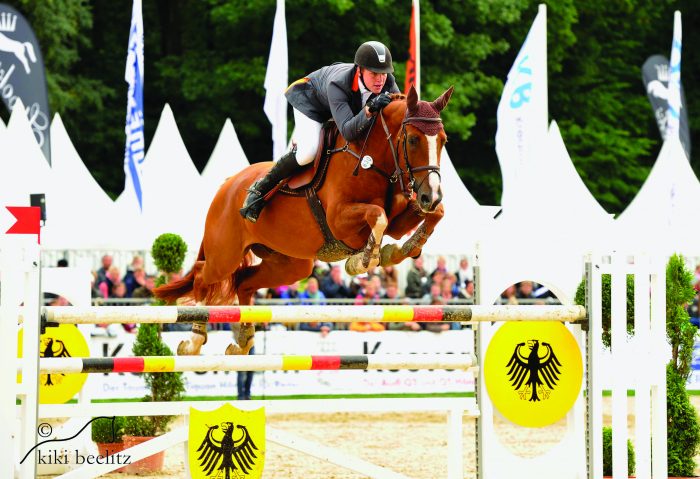
Quinghai wins the 6 year old Championship at the Bundeschamp – the gelding went on to compete 1.60 with Guido Klatte Jr, with winnings up to June 2018 of €122,151
Springpferdeprüfungen are offered for horses between four and six years old. There are three different classes (A,L.M / with fences from 100 to 130 centimeters). The courses should be horse friendly to motivate the horses and make learning success possible. For horses in the age between four and five years there are the classes A und L and for horses in the age of five and six years there are the classes L and M. Today nearly all successful show jumping horses in Germany started their career in younger years in Springpferdeprüfungen. Some other countries have copied the German system for their young show jumping horses.
As valuable as this system is, there is still a need to address a problem that is becoming increasingly apparent with the nationwide introduction of the Springpferdeprüfungen. Horses who struggle because of their temperament or their willpower in these tests have a hard time finding their way into high performance sports as they are often unsuccessful in these young horse competitions. But especially for top-class sport, horses with special characteristics are needed. You need horses with the absolute will to succeed – but this does not always produce young horse success.
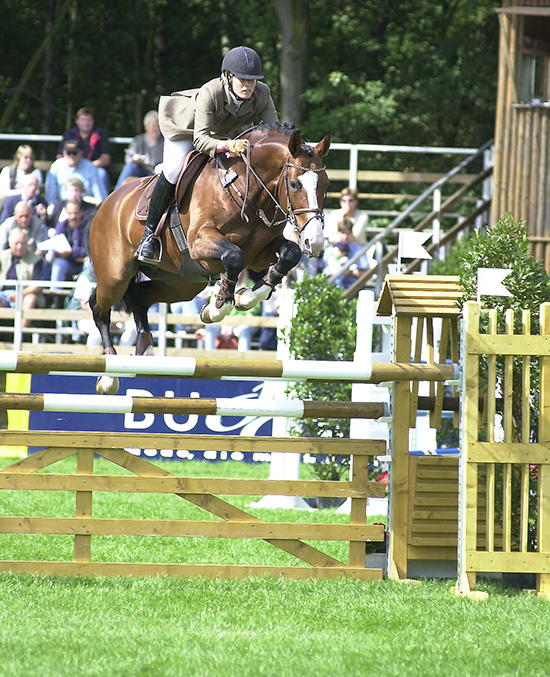
Forsyth (For Pleasure / Dorian) another graduate of the Bundeschampionate
who went on to compete 1.60…
A good example of this problem is the offspring of the stallion For Pleasure. The Hanoverian son of the legendary Furioso II was, due to his own famous sporting successes with the riders Lars Nieberg and Marcus Ehning, favored as a sire by a lot of breeders. Round about 600 of his children are registered in the German sport horse data base. However, when his kids got into an age for Springpferdeprüfungen, their success did not always live up to expectations, as they often resembled their dad in their jumping style, which was characterized by perfect jumping, but with a little bit of an unorthodox manner. So the run to For Pleasure as a sire was stopped clearly. But some years later when the For Pleasure children were old enough for the high performance sport, a lot of his progeny were very successful in international top competitions. Nearly one third of all his registered children were placed in show jumping competitions of the class S, the highest class in Germany. In the WBFSH-ranking 2017 for show jumping sires For Pleasure is ranked on place three.
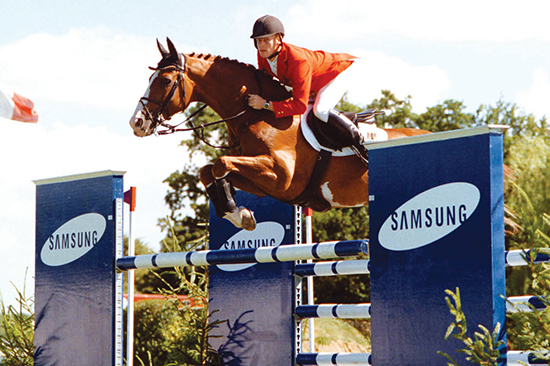
For Pleasure – just wait until the fences get bigger for his progeny to shine…
All-in-all the introduction of the system Springpferdeprüfungen in the mid of the 70s has for the breeding and sport very positive effects. Perhaps one of the most important aspects is that the riders and trainers, if they want to have success in Springpferdeprüfungen, are forced to educate the young horses in the right way in the sense of the German Principles of Riding, the famous German instruction book for the education of horses and riders, which is since more than 50 years another secret of success of the German riding sport and breeding. But this is another story.
Once again, thank you Thomas Hartwig…
Next we analyse the results
Let’s throw the results over a seven year period in the direction of showjumping breeding enthusiast, and professional statistician, Gemma Alexander. This is what Gemma found…
Are Young Horse classes an indicator of future performance?
There is much hype surrounding the major championships for young jumping horses: the Zangersheide World Young Jumping Horse Championships, the Bundeschampionate (German National Championship), and the French Young Horse Championships. These events, while all being young horse competitions, are judged differently; the Zangersheide championships are run as per an open showjumping competition, where faults are accrued objectively (rails, refusals and time) and clear rounds jump-off against the clock. The Bundeschampionate and French Championship on the other hand are judged on points: points are subjectively awarded, with scores not necessarily reflecting objective faults.
So just how good are these championships at predicting future performance at the highest level of the sport? And does one of the championship formats provide a better indication of future performance than the other?
For this analysis we have included the results from eight years of championships (2007 to 2014 inclusive), taking into consideration the top ten placegetters in each age group (five years and six years) in each year.
YH results (top 10 finishers) 2007 to 2014
| 1.60m | 1.55m | 1.50m | 1.45m | 1.40m | <1.40m | ||
| Zangersheide | 5YO | 31.3% | 2.5% | 17.5% | 15.0% | 8.8% | 25.0% |
| 6YO | 48.8% | 5.0% | 11.3% | 12.5% | 8.8% | 13.8% | |
| TOTAL | 40.0% | 3.8% | 14.4% | 13.8% | 8.8% | 19.4% | |
| Bundeschampionate | 5YO | 25.0% | 7.5% | 13.8% | 26.3% | 6.3% | 23.8% |
| 6YO | 42.5% | 3.8% | 16.3% | 13.8% | 5.0% | 20.0% | |
| TOTAL | 33.8% | 5.6% | 15.0% | 20.0% | 5.6% | 21.9% | |
| French Champs | 5YO | 16.3% | 5.0% | 17.5% | 20.0% | 16.3% | 32.5% |
| 6YO | 23.8% | 10.0% | 21.3% | 21.3% | 6.3% | 25.0% | |
| TOTAL | 20.0% | 7.5% | 19.4% | 20.6% | 11.3% | 28.8% | |
Looking at the results of these young horse classes combined, a total of 53.1% of top-10 finalists have gone on to compete internationally at a height of 1.50m or above, and 31.3% jumping at the 1.60m level. A further 26.5% have gone on to record results at heights between 1.40m and 1.45m. Six-year-old classes have proven to be a better indicator of future performance, with 60.8% of finalists going on to compete at 1.50m level or above, compared with the five-year-old classes with 45.4%.
Over the eight subject years, the most successful championship series – with success defined as finalists that go on to compete at a high level later in their career – was the Zangersheide Championship, with a total of 58.1% of top-10 finalists going on to compete internationally at a height of 1.50m or above, and 40.0% competing at the 1.60m level. The next most successful championship was the Bundeschampionate, with 54.4% of finalists going on to compete at 1.50m level or above, and 33.8% competing at 1.60m; the French Championships came in third with 46.9% of finalists going on to compete in at least 1.50m level, and 20.0% competing at 1.60m.
Over the three championship series and the eight subject years, 14 winners have gone on to compete internationally at 1.60m level – a total of 29.2% of the championship winners.
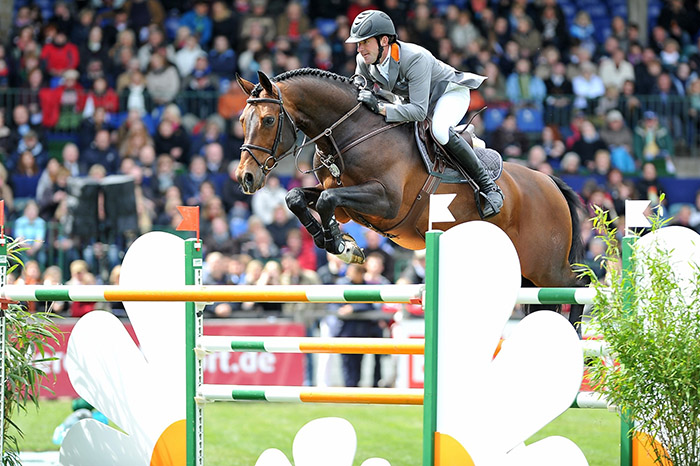
A winner at the Bundeschampionate – Monte Bellini. Ridden by Phillip Weishaupt, the stallion went on to win the CSIO 5* at Falsterbo and the CSIO 5* at Rotterdam.
His lifetime winnings were €101,050
Seven of these were winners of the Bundeschampionate: Monte Bellini (Montender x Ramiro; 2008 six year old), Balsandra (Baloubet du Rouet x Sandro; 2010 six year old), Cornet’s Balou (Cornet Obolensky x Continue; 2011 five year old), Toulouse 66 (Toulon x Ganymed; 2011 six year old), Crespo PKZ (Cornet Obolensky x Landadel; 2012 six year old), Qinghai (Quidam de Revel x Cordalme Z; 2013 six year old), and Coco Berlini (Berlin x Quidam de Revel; 2014 six year old). A further five were winners of the Zangersheide World Young Jumping Horse Championship: Zekina Z (Zandor Z x Carthago; 2007 six year old), Vedor (Indoctro x Fedor; 2008 six year old – who later in life went on to compete at the London Olympics for Australia under the saddle of Julia Lynch nee Hargreaves), VDL Groep Quinthago Z (Quinar Z x Carthago; 2009 five year old) Gladys (Wandor van de Mispelaere x Toulon; 2011 five year old) and Gangster de Longchamp (Orlando x Sheyenne de Baugy; 2012 six year old). From the French Young Horse Championship series, two winners over the subject years have gone on to compete at 1.60m level: Orient Express (Quick Star x Le Tot de Semilly; 2008 six year old), and Heartbreaker van de Achterhoe (Bentley van de Heffinck x Catango Z; 2012 five year old).
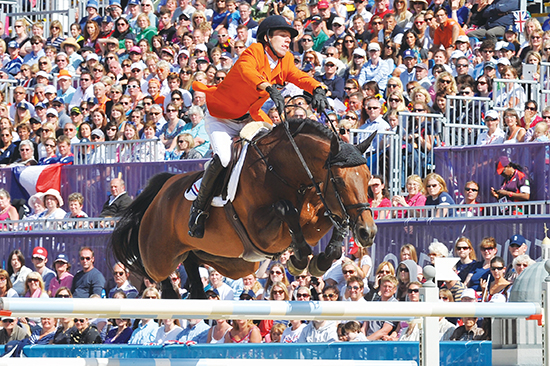
Verdi – the most successful
How many Olympians / WEG competitors?
The most successful alumni from these young horse championship classes has been Verdi TN N.O.P (Quidam de Revel x Landgraf I); Verdi placed 7th in both the 2007 and 2008 Zangersheide World Young Jumping Horse Championships. Verdi has gone on to compete in two Olympic Games, five World Cup Finals and a World Equestrian Games where he won team gold, with Maikel van de Vleuten.
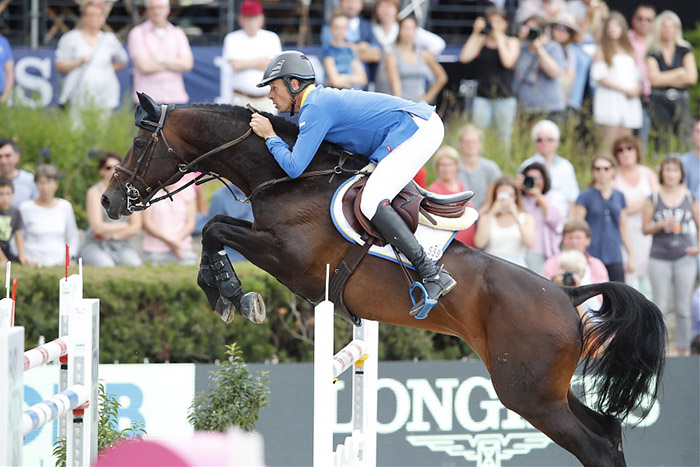
Codex One, winner of €1,245,790 with Christian Ahlmann, winning five star Grand Prix at Berlin, Basel, Stuttgart, Valkenswaard, Aachen, Hamburg and Frankfurt…
From the eight subject years, eight horses who were a top-ten finalist in their age groups went on to compete at an Olympic Games: Verdi, Codex One (Contendro I x Glueckspilz; Bundeschampionate 2007 2nd place five year old and 2008 =9th place six year old), Vedor (Indoctro x Fedor; Zangersheide 2008 winner six year old), Cornet du Lys (Cornet Obolensky x Champion du Lys; Bundeschampionate 2009 7th place five year old), Derly Chin de Muze (For Pleasure x Nabab de Reve; Zangersheide 2009 3rd place six year old), Zilverstar T (Berlin x Cavalier; Zangersheide 2010 5th place six year old), Emerald van’t Ruytershof (Diamant de Semilly x Carthago; Zangersheide 2010 2nd place six year old) and Fine Fleuri du Marais (Toulon x Cento; Zangersheide 2011 6th place six year old). A total of 2.1% of young horse class finalists over the eight years have gone on to compete at an Olympic Games.
From the subject years, four horses who were a top-ten finalist in their age groups went on to compete at a World Equestrian Games: Verdi, Codex One, Conte-Bellini (Cornet Obolensky x Ramiro; Bundeschampionate 2008 2nd place five year old), and Status II (Satisfaction I x Sao Paulo; Bundeschampionate 2010 2nd place six year old). A total of 1.0% of young horse class finalists over the eight years have gone on to compete at a World Equestrian Games.
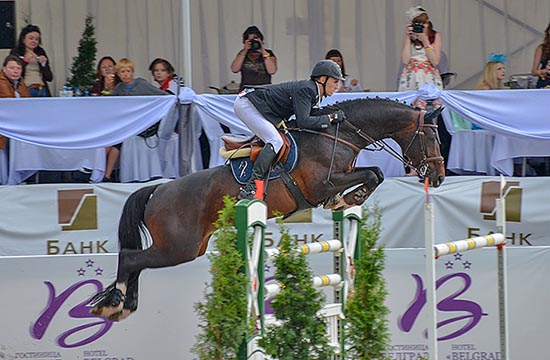
Conte-Bellini – from young horse classes to the WEG
Success in a young horse championship is by no means a guarantee of future success at the top levels of the sport, however there are reasonable odds that these horses will do well. Over half of young horse championship top-ten finalists go on to compete in their career at a level of 1.50m or above. Considering that a number of horses will be withdrawn from the sport for reasons ranging from breeding duties to injury, these are not entirely bad odds!
Thanks Gemma – it is interesting that Zangersheide should come out of the comparison so well, since it has been largely a Benelux affair, with the big powers, France and Germany, sitting the champs out. Thus in their report of the championships of 2000 by Henk Bouwman and Dirk Zagers noted – under the sub-head – Not Taken Seriously:
“At first glance it was seem to be cause for amazement that German and French studbooks gave such a mediocre performance at the breeders’ event at Zangersheide, in striking contrast to the Flemish and Dutch ‘small fry’. But anyone who takes the trouble to delve more deeply into these matters will discover the logic behind this lopsided ratio. The Dutch federation NHS, after the national competition in Emelo dispatched the best twelve of the 5 year olds as well as the six year olds off to Lanaken. Only number 7 of the six year olds stayed away. After the finals in Gesves, the Belgian KBRSF sent numbers 1, 3, 5, 6 and 9 of the five year olds and numbers 3, 4, 5, 10, 11 and 12 of the six year olds. The German FN turned up after the Bundeschampionat in Warendorf with numbers 4, 6 and 15 of the five year olds, and numbers 4, 6, 13, 19, 25, 28 and 33 of the six year olds. While this was not exactly an impressive delegation, the French federation showed even less interest. After the Grande Semaine in Fontainbleau, the Championat sent numbers 4, 14, 38 and 58 of the five year olds and not even a single one of the six year olds. Of the six countries in the ruling committee of the WBSFH four of the ‘small fry’ – Denmark, Ireland, Belgium and the Netherlands – in these World Championships, took home 72 percent of the combined prizemony of €51,664.”
It might have been possible to refer to the Belgian and Dutch studbooks as ‘small fry’ back in 2000, but in 2017 the small fry have become the big fish, with the WBFSH jumping studbook rankings topped by the larger Belgian book, the BWP, followed by the KWPN, then two more books based in Belgium – sBs and Zangersheide, with the Westfaliens in fourth the only German book in the top five, with the traditional power houses of Holstein in 6th, Hanover in 8th and the Selle Français, coming in 9th.
In 2000, while the ‘big fish’ in jumping breeding were happy to bask in the glory of their internal championships, and continue to be bound by ‘time honoured’ rules and regulations, the Benelux newcomers were out there taking on the world, and ready to innovate and grab the best blood where-ever they could find it – and seventeen years later, we see the result.
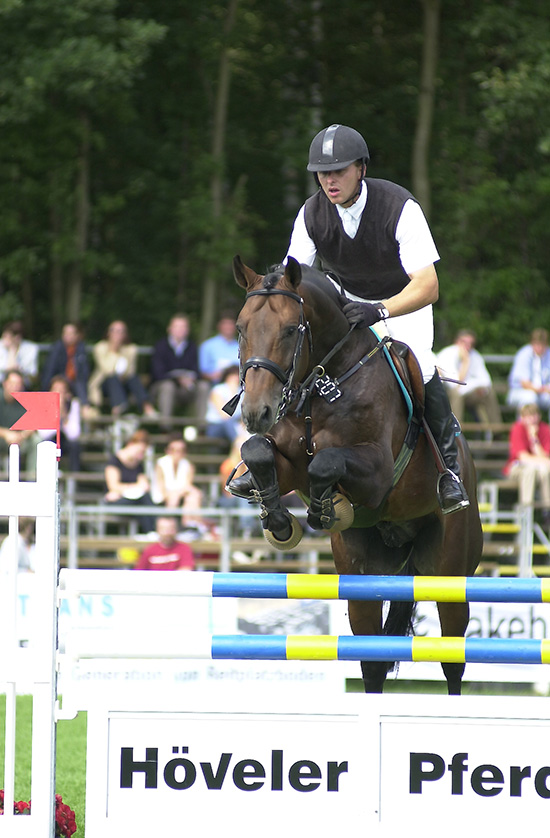
Conterno Grande (Contender / Grannus) went on to place at Grand Prix
with Marco Kutscher
Okay, that’s the nitty gritty numbers, I thought it was a good idea to talk with one of the most successful young jumping horse trainers of all time, Franz-Josef Dahlmann Jnr, who is known to one and all as, Peppi. I caught up with him when he was judging the Young Jumping horse classes at Dressage and Jumping with the Stars 2018. I guess Peppi’s take home message is good riding is good riding no matter the age of the horse.
When you were judging you said, make it easy for your horse, yet riders seem to find so many ways of making it complicated and difficult…
“Here we are dealing with young horses, but it doesn’t matter if it is young horses or older horses, I think we have to find a way to make it easy for my horse – and that means easy for me. We have to try every day that we get a happy horse, a nice rhythm over the course, and then we get a good result.
more follows
Breeding jumping horses? There’s new stallions for 2018 available from International Horse Breeders, see them all at www.ihb.com.au
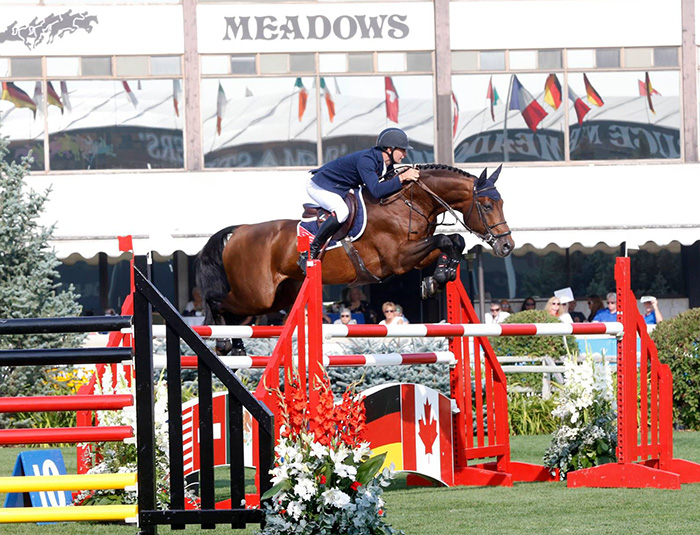
Like Chacgrano
But you probably saw more rails in a class of 15 horses than you would in a week at the Bundeschampionate… Why is Germany able to produce this incredible number of young horses that just jump fence after fence?
“Maybe we start earlier with the young horses, today some of the horses looked a little bit green for the course. In Germany we start quite early with the aim to maybe go to the Bundeschampionate or the World Young Horse Championships, and when we have this idea, we have to start earlier.”
I find the difference between jumping and dressage interesting. In dressage we have young horse stars that never go on to Grand Prix, and Grand Prix horses that never went to Young Horse classes – but in jumping there doesn’t seem to be this split, good Grand Prix horses were often very good Young Horse competitors…
“But then sometimes at the Bundeschampionate, we see a jumping winner that we never see again. It is difficult to explain, but in the end you have to have a super management, from the young horse to the old horse, to the Grand Prix. We have to have a lot of luck that he stays sound, to get the experience for the big big sport that’s a long long way – sometimes it works, sometimes it doesn’t…”
Looking at some of the super star horses you started, did you know when you first rode Cornado that you were sitting on a horse that would go Grand Prix?
“Cornado and Comme il Faut, these two horses were right from the first moment I sat on them, from the first time I cantered them over a pole, you knew. Especially Cornado, I had him for three years and I did six, seven and eight-year-old classes. In the beginning he was not so easy to ride, he was un-concentrated, that is why, especially when he was six, he did a lot of jumps. In one year – I rode every fence myself – he touched three fences. Three poles we had to pick up from the ground in one whole year, and one pole from one show. That horse is out of this world, and so is Comme il Faut.”
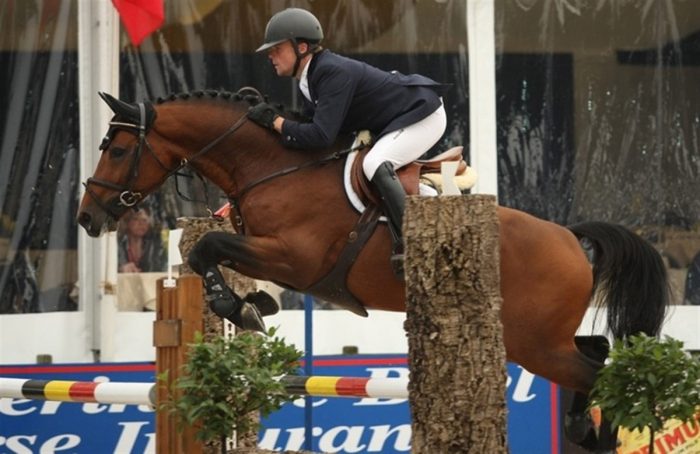
Peppi and Comme il Faut
“Comme il Faut, he’s a little fighter, when I sit on him, he’s like Mike Tyson, he fights for you.”
But his sire, Cornet Obolensky was a bit crazy when he was a young horse…
“But with Comme il Faut it is the mother, Ratina Z, the temperament from her is incredible – Comme il Faut was the easiest horse. In the beginning the canter was not the biggest canter because he is not such a big horse, but that got better and better. When he was five, sometimes I had to make one stride extra but it got better, and by the time he was six years old, it was like a normal canter stride – that’s why he is special, he tries.”
“Colourit I had for three years, I got him at the beginning of seven and I did the first Grand Prix with him at two star level, that was very nice, he had such scope.”
Is it hard with horses as brilliant as those two not to ask too much? Do you have to keep saying to yourself, back off, be careful…
“I want to always just be a friend to my horse. I love my horses and that is why I will always take a little bit longer, but for the future, it’s better for the horse and I have more fun and so do the owners and my sponsors.”
Do you see yourself as a specialist young horse trainer or just a jumping trainer that has had success with young horses…
“I think a lot of people make a super job with young horses, and I think I have a nice feeling as well, but I had a lot of luck with the horses I got in the past.”
Do you jump your young horses much, or is it mainly flat work?
“It depends on the horse. Like I said before, Cornado had to have a lot of jumps when he was young so he came on line and everything was easy but with Comme il Faut, I am thinking a lot about what comes between the fences, the flatwork. Some horses need more flatwork, some more jumping, they are all different.”
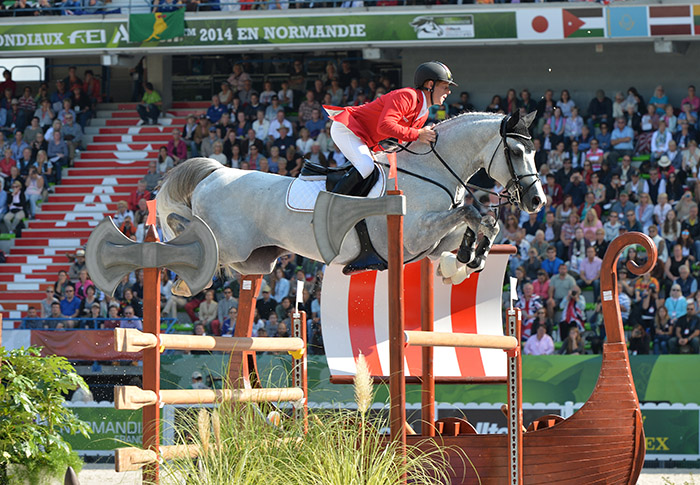
Cornado at the 2014 WEG with Marcus Ehning
People sometimes talk about an American style that is light and forward, and a German style that is heavy and aggressive, but I look at the good German riders and they are as light and tactful as any in the world…
“Absolutely, when you see a rider like Marcus Ehning or Marco Kutscher, it’s unbelievable, the feeling, how easy everything always looks, every time with every horse. For myself, I always try to make it easy. I’m not so big and tall, and I can’t ride heavy, but the sport is getting different, it has to get a little easier.”
Who were your teachers?
“I was five years with Paul Schockemöhle, that was unbelievable, the way he trained me, not saying so much, but he really concentrates, also at Schockemöhle’s I trained with former national coach, Dietmar Gugler.”
After his time at PSI, Peppi was the number one rider for another German coach, Otto Becker, before going on to spend twelve months at Zangersheide. Nowadays, Peppi, and his wife, former British eventing rider, Kate, manage his parents’ equestrian centre.
Who is the best showjumping rider of them all?
“My hero when I was small, was always Jos Lansink – how he rides the flatwork, how he jumps. I don’t like cowboys who try to win every class, I love to watch Jos Lansink.”
Remember Jos, he was the one who could make the race against the clock at the World Championships in Lanaken look sweet.
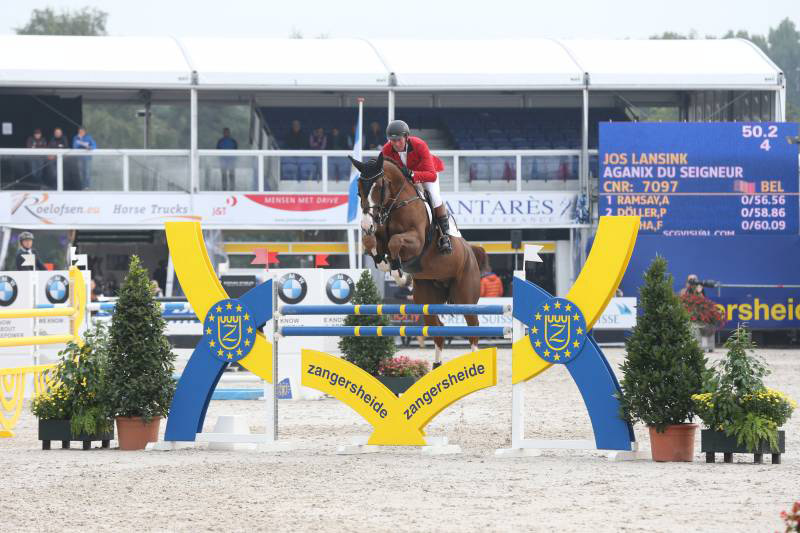
Shining at Zangersheide, Jos Lansink and Aganix du Seigneur (Ogano Sitte/Challano Z)
If you liked this story – there’s plenty more, on breeding, on training, on horsemanship, just take a wander around our website, it’s FREE!



